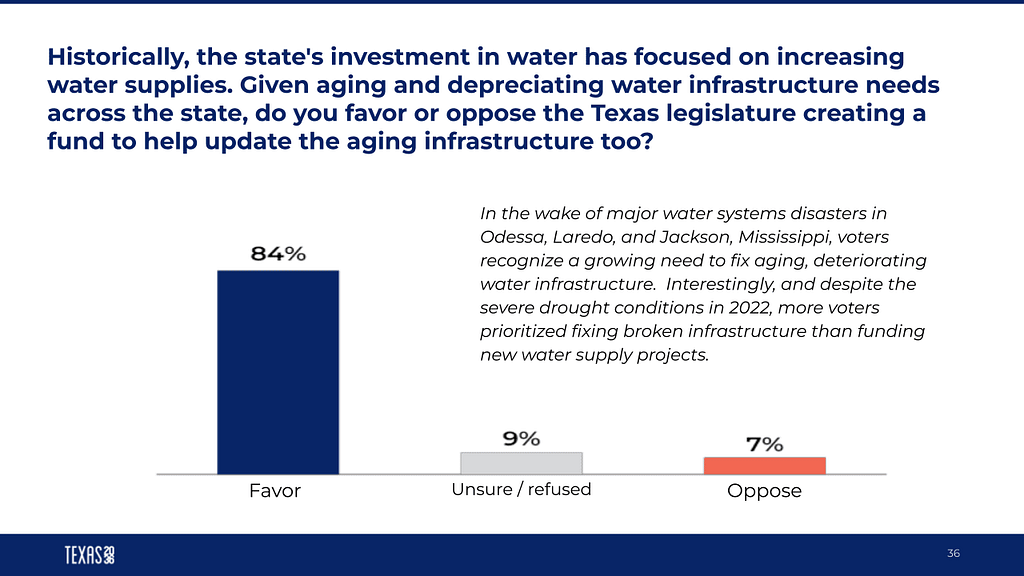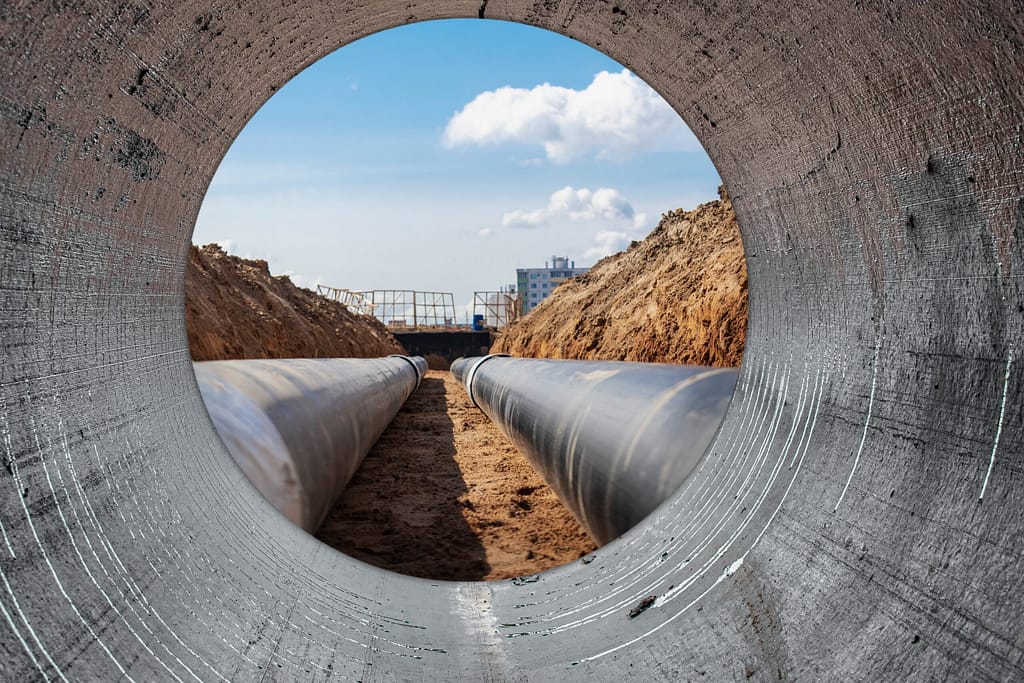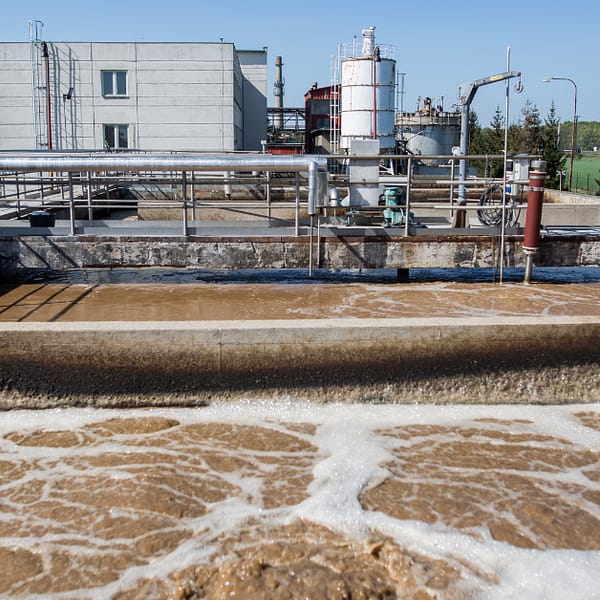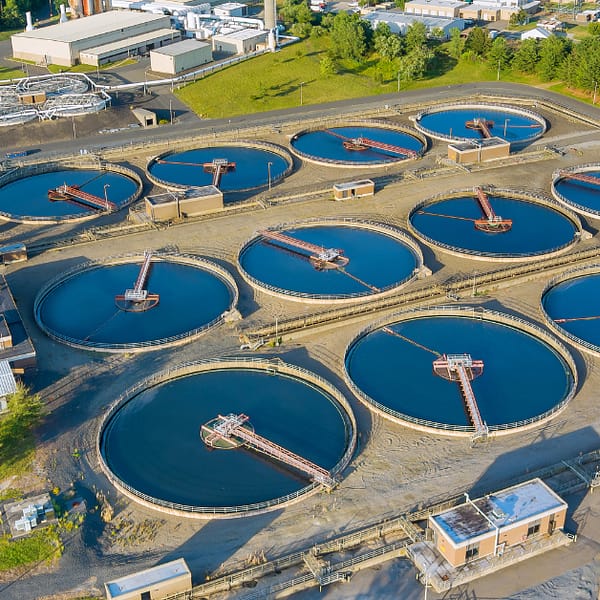
In 2022, Texas 2036, the Texas Water Foundation and the Water Finance Exchange collaborated to host a series of stakeholder meetings to discuss the challenges facing Texas’ water and wastewater infrastructure and the opportunities presented by the U.S. Infrastructure Investment and Jobs Act.
This policy blueprint prepared by Texas 2036 offers findings and recommendations that seek to both maximize the state’s leverage and deployment of IIJA dollars while using this unprecedented federal funding opportunity as a catalyst for a new policy framework for addressing Texas’ water infrastructure needs.
Combined, these recommendations aim toward developing a statewide support structure and investment strategy to address the water infrastructure needs of many Texas communities.
Key elements of this strategic implementation include the following:
Financial Strategy: Establish a new fund and TWDB revenue stream that addresses the problems associated with aging, deteriorating infrastructure.
Water Access Needs Planning: Develop a new assessment process that evaluates water access needs to identify utilities that are failing or at-risk or failing and using that data to guide and inform the strategic deployment of state resources.
Capacity Development: Systematically build and develop needed capacity for sustainable infrastructure development, including technical assistance outreach, workforce development and economies scale through regional solutions.
Community Engagement: Encouraging the development of technical assistance provider corps, deployment of private and philanthropic capital and private-sector partnerships to broaden the array of providers addressing water access needs.

What Texans want
According to Texas 2036’s Texas Voter Poll released in October 2022, 84% of voters support the Legislature’s creation of a new fund to address the problems associated with our aging, depreciating water infrastructure.
Even as a severe drought affected Texas for most of 2022, more Texans supported funding to fix broken water infrastructure (84%) than those who supported increased funding for water supply development (82%).

Why investments matter:
Despite the significant funding opportunities made available through IIJA, the magnitude of Texas’ water and wastewater infrastructure problems necessitate changes in the state’s infrastructure assessment and financial strategy. Federal funding and programs cannot address these issues alone.
What can be done:
The opportunity exists to develop a framework to assess the water access needs of water and wastewater utilities and allocate technical assistance and financial resources towards systems that are failing or at-risk of failing.
This water infrastructure resilience plan offers a menu of recommendations for policymakers’ consideration.
Expanding Agency Capacity
Key Takeaways:
- TWDB needs greater resources to accomplish its mission-critical work relating to water supply development, flood control mitigation and infrastructure repairs.
- Texas needs to maximize leverage of Federal IIJA dollars.
- Additional state appropriations are essential for fixing aging, depreciating infrastructure, including that within rural areas.

The High Price For Texas’ Water Future

Key Takeaways:
- Texas will need to spend more than $150 billion over the next 50 years on water infrastructure.
- This price tag includes the costs associated with building new water supplies, developing flood control and mitigation strategies, and fixing aging, deteriorating water and wastewater systems across the state.
- These investments are essential for Texas communities to address the problems associated with drought, flood and crumbling infrastructure.












